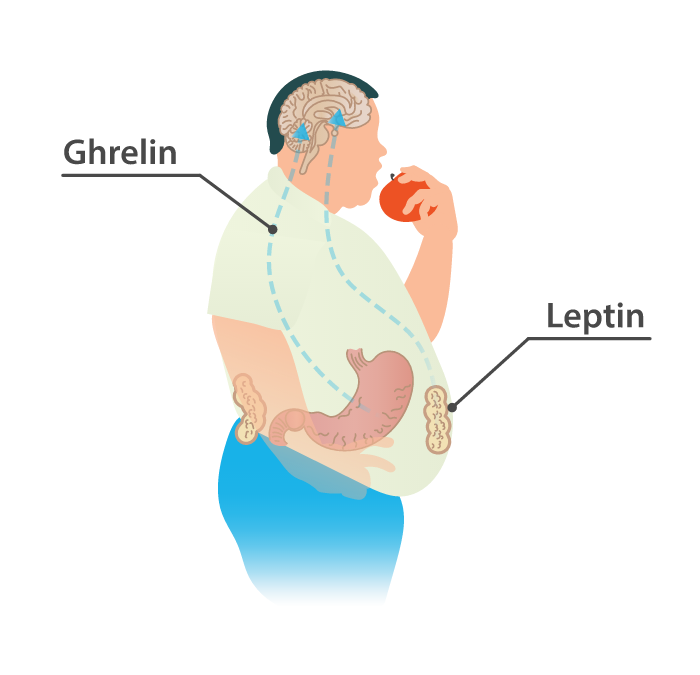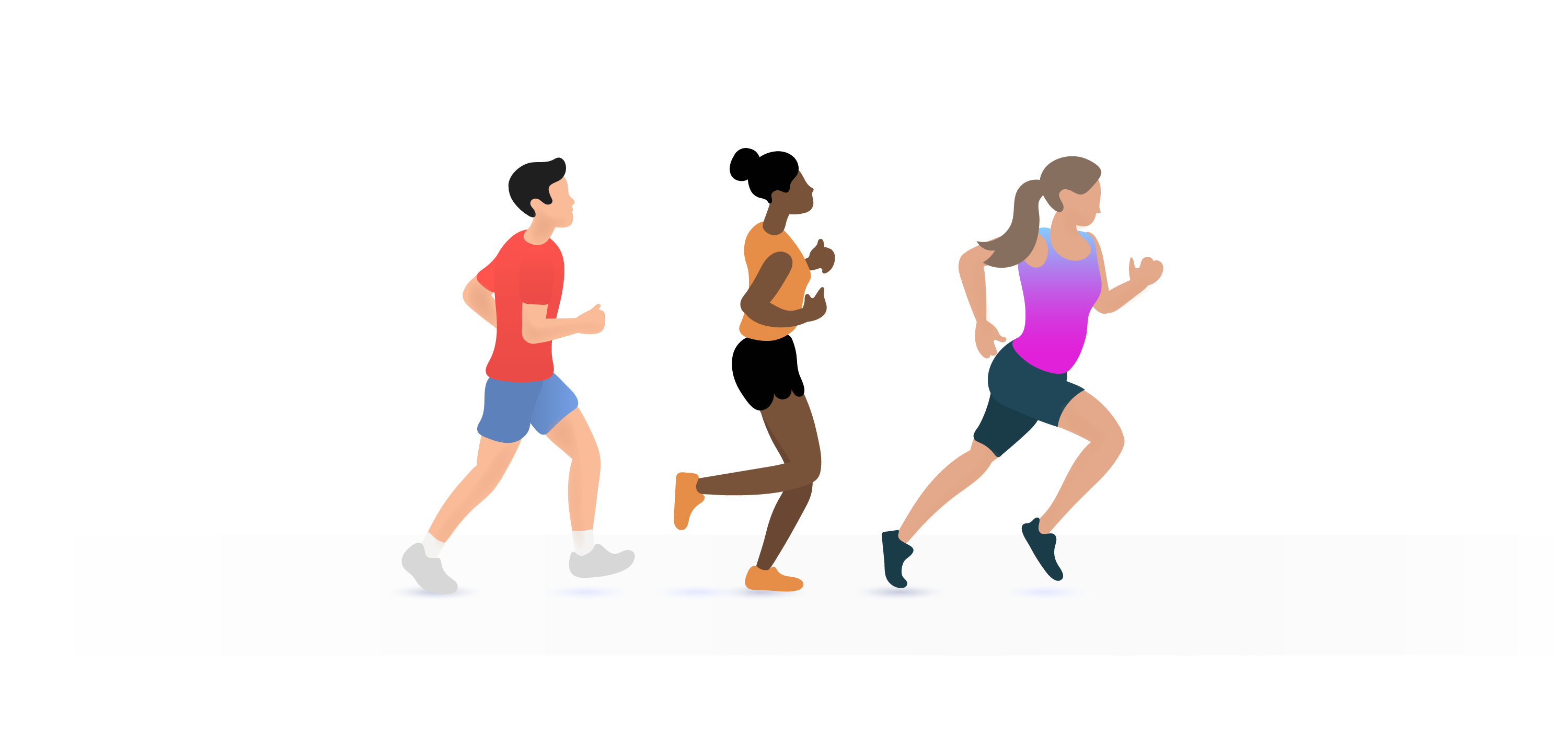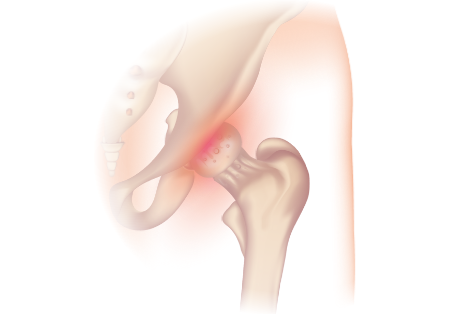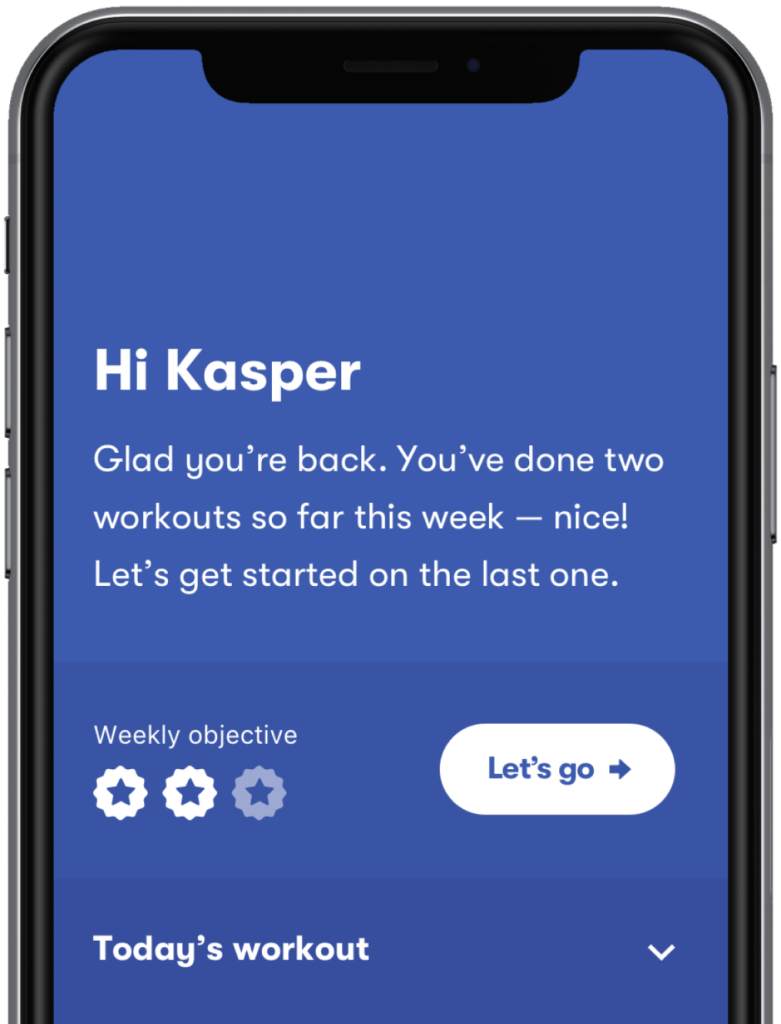We sit in the middle of the second global “running boom”. This documented surge in running participation mirrors a similar phenomenon in the 1970s to 80s. Both times, the primary motivation people started and continued to run has come down to one word: health.
Health improvement or maintenance are both the definitive starter and sustainer for most runners. Sure, you may also be running for competitive reasons but, according to Running USA’s 2017 report, the top 3 reasons runners continue running are:
- staying healthy
- staying in shape
- relieving stress
Regular aerobic exercise, such as running, has been resoundingly endorsed by global research as a critical component of a healthy lifestyle. Which means, if you are a runner, you’re truly on track with those goals above. In fact, regular running has the potential to affect a whole range of functions within your different organs. This article will show you how it works in more depth. Let’s take a look at just a few of those body functions positively impacted by running.
Content
- Fuel Efficiency and Sensitivity- Your Muscles and Blood Glucose
- Tweaking Your Hunger Urges
- Protect Your Power Plants
- Training Your Heart Muscle
- Shape Up the Inside of Your Blood Vessels
- Bulk Up Your Brain
- Running for REMS- Better Sleep Quality
- Reinforcing the Outside of Your Bones
- Stimulating the Inside of Your Bones
- Beating Back Inflammation
1. Fuel Efficiency and Sensitivity- Your Muscles and Blood Glucose
On the micro level, muscles are made up of individual cells – like all other tissues in your body. Each cell needs its share of energy for every action it performs. It gets this energy from dissolved blood glucose. Muscle cells have specially adapted receptors with a very high affinity for glucose. Muscles need a lot of glucose, so they play a huge role in keeping blood sugar levels under control. Muscles can respond to these receptors as needed by expressing or repressing them. Engaging in regular aerobic exercise, like running, can increase muscle expressions of these receptors at rest.
One study saw this effect after less than 4 months of exercise training at a relatively low volume – only 3 days per week for 20 minutes. The expression of these glucose receptors in the study’s subjects increased by 52%. This means better control over blood glucose levels – a major benefit of running right there!
High levels of blood glucose lead to chemical interactions with other materials dissolved in the blood, leading to damage of the blood vessels’ walls. Lowering blood glucose levels, by ensuring the glucose is absorbed by your muscles, falls mainly to Insulin. Your body’s primary producer of insulin is the pancreas.
If you’re a diabetic, you will have a decreased sensitivity to insulin. As a result, your pancreas is forced to produce insulin at an unsustainable rate. In spite of its efforts, blood sugar levels in diabetics will remain uncontrolled. Also, the small, fragile blood vessels within the renal cortex become frayed due to inflammation and high blood pressure as a result of high glucose concentrations.
Better glucose control is a basic, yet important adaptation of exercising regularly. Make running a part of your everyday life to take full advantage of it.
2. Tweaking Your Hunger Urges
Calories in less than calories out is the most fundamental concept behind any successful weight loss program. It sounds simple enough, but is definitely easier said than done. Not only does running directly help with a higher calorie output, it can also help reduce the input. Leptin, a hormone integral to appetite control, is regulated by running.
Your body has two main hormones influencing feelings of hunger and satiety: leptin and ghrelin. High levels of ghrelin and leptin let your brain know you’re hungry. Ghrelin is a very short acting hormone, so your brain mainly relies on falling leptin to tell it you are full. The primary producer of ghrelin is your stomach, while leptin is produced mainly by fat tissue. There are degrees of sensitivity to both hormones. If you’re obese, you’ll actually have higher levels of leptin but also a seemingly blunted response to leptin. Diabetics have a similarly blunted response to insulin.

So how does exercise fit in here? Immediately after a bout of exercise, levels of ghrelin and leptin are suppressed for about 1-2 hours. Levels of both hormones rebound after. This is simply your body letting you know it needs nutrients to refuel and recoup post workout. But it’s the long-term effects of regular exercise on your circulating leptin levels that show it may be crucial for weight loss. These levels decrease after a period of sustained, regular aerobic exercise (such as running). Once again, this occurred regardless of age or gender, according to a recent systemic review.
Decreased leptin may also help improve blood glucose control. Leptin sensitivity may be an important clue in predicting insulin sensitivity. As leptin sensitivity improves or worsens, insulin sensitivity tends to follow suit. In short, as your leptin levels fall with regular exercise, caloric intake and metabolic efficiency are both improved. If you’re looking to lose weight, an appropriately tailored running program can be a key to your success.
3. Protect Your Power Plants
Every cell in your body has its own dedicated nuclear reactors, the mitochondria. These tiny cellular machines are responsible for producing most of the energy the cell utilizes – both at rest and while exercising. Muscle cells require high numbers of high quality mitochondria. Unfortunately, ageing takes a heavy toll on them. As people age, we see both structural and chemical impairments in the mitochondria. You can see visible signs in the age-related decrease in muscle mass. This decrease causes subsequent declines in your exercise capacity, muscular power output, balance insulin sensitivity etc with age. Damaged mitochondria in a muscle cell means the cell cannot produce the amount of energy it needs.
As a consequence of this energy deficit, the cell will become increasingly frail. Eventually, it dies. To make matters worse, relatively fragile components of your muscle cells called mitochondria are exposed to high levels of damaging oxidative stress. Their DNA doesn’t have many repair mechanisms – like other types of DNA in the cell possess. Fortunately, exercise can reverse damage to your mitochondria.
With training, your muscles are able to manufacture more mitochondria and make them more resilient. Exercise improves mitochondrial synthesis and quality thanks to an increase in protein markers. This happens regardless of your age. It’s never too late to commit to a regular running program. You’ll benefit from an immediate and immense source of protection to one of the most important cell components in your body.
4. Training Your Heart Muscle
Your heart responds to exercise just like any other muscle: train it and reap the benefits of adaptation. Growth in the heart muscle typically occurs in the lower chambers called the ventricles, particularly the thicker tissue of the left ventricle. Your heart’s ventricles send blood through the pulmonary circulation to load up with oxygen and onto the rest of the body to unload that oxygen. When your heart muscle grows, it’s called ventricular hypertrophy.
There are two types of ventricular hypertrophy. The first is called pathological hypertrophy. It’s the result of your heart being overloaded due to a diseased state. For example, hypertrophic cardiomyopathy is a genetic mutation causing the heart muscle to grow unnaturally thick on its own. This causes the heart’s muscle cells to arrange themselves in a disjointed manner. If you have this condition, you’re predisposed to life-threatening arrhythmia. You’re also at an increased risk for developing areas of poor blood flow in your heart.

This doesn’t happen in the beneficial kind of heart muscle growth caused by exercise. In what’s called physiological hypertrophy, the pattern of muscle growth is more coordinated. With regular aerobic exercise, your heart’s muscle mass can increase by 17-32%. The number of blood vessels also increases to supply the bulkier muscle. This growth allows the heart to maintain an orderly turnover of its muscle cells. As the muscle cells die eventually, they are replaced appropriately. (Instead of stiff scar tissue filling in the gaps.) There’s good news for your heart’s mitochondria too. Remember those little cell engines? They are also protected if you exercise regularly.
Without exercise, your heart weakens. Over time this leads to a decrease in the functionality of the left ventricle. A predisposition to conditions like congestive heart failure can be the result. The most important thing for maintaining a strong heart muscle is to treat it like any other muscle: give it a regular workout.
5. Shape Up the Inside of Your Blood Vessels
One of the most active, but least talked about tissues in the human body is the one-cell thick lining on the interior wall of all your blood vessels. This layer is known as the vascular endothelium. You have different kinds of endothelial layers all throughout your body, but the vascular endothelium is particularly fascinating. It carries out a large number of functions, ranging from immune system mediation to controlling the flow of substances in and out of cells. Arguably, its most crucial role is directing blood flow and blood pressure. Unfortunately, the vascular endothelium is a very delicate system and a lot can go wrong.
Endothelial dysfunction is either a major source or consequence of many ailments, including high blood pressure, diabetes, high cholesterol, heart attacks and certain types of strokes. If you haven’t heard much about the endothelium, it’s because much of what it does is hard to tangibly measure and track. It secretes many chemicals that can only be measured in special laboratory settings, making studies in everyday scenarios hard. Even so, regular running is worth it for endothelial effects alone.
Your endothelial cells in your arteries constantly withstand cyclical cycles of stretch and strain corresponding to each heartbeat. The strain cycles’ intensity increases when you exercise because the heart is constantly moving more blood volume. As it turns out, this stretch is a vital component of sustaining a healthy vascular endothelial layer. These cycles of stretch and relaxation are a key stimulator of gene expression related to endothelial alignment, growth, repair and replacement. The main goal of the vascular endothelium is to keep the bloodstream flowing in a smooth one-directional manner.

When you exercise, your blood vessels are forced to dilate to keep the flow smooth. Your largest arteries are quite elastic, so this is not much of a problem for them. Smaller arteries, called resistance arteries, need some help. These vessels have rings of muscle acting as gates to control blood pressure. When you exercise, these rings relax and open wider. Like any muscle, their functionality improves with training. In people who don’t exercise, we can see impairment in a protein signal that causes these rings to relax. One a widespread scale, this escalates high blood pressure which damages the endothelial wall as a result.
The gene expression caused by the stretch allows the endothelium to reinforce any potential weak areas in a vessel. This helps keep the endothelium in a tight, shingle-like alignment. If the alignment becomes disrupted, it opens up a niche for cholesterol in the blood to accumulate inside the vessel wall. In the large arteries, endothelial damage can
also cause the vessels to lose their elasticity and become less compliant.
This is the early stage of atherosclerosis and plaque development. If this occurs in the vessels of the heart, the plaque can eventually grow and lead to a heart attack. None of this repair would be possible without the influence of regular aerobic exercise. Going for a run is one of the simplest things you can do to protect your vessels.
6. Bulk Up Your Brain
If you’ve ever wondered exactly why exercise is good for your brain, here’s your answer: a molecule called brain-derived neurotrophic factor (BDNF). The third word is the key here – neurotrophic means “neuron growing”. The BDNF molecule is particularly active in the hippocampus, the area of your brain associated with memory, emotions, behavioral inhibition and stimulation. Reduced levels of the BDNF molecule are a hallmark of many neurocognitive diseases, including Alzheimer’s and Parkinson’s. They’re also at the core of psychological conditions including depression, bipolar disorder, schizophrenia and PTSD.

There’s also an ageing effect. BDNF levels tend to fall later in life. Fortunately, exercise is quite effective at increasing BDNF levels. Initial studies in rats showed a substantial increase in BDNF production after even just single bouts of exercise. This effect has been confirmed in humans.
Engaging in regular aerobic exercise provides protection and enhancement to the hippocampal functions – such as memory retention. Over time, we actually see an increase in what is called the brain’s grey matter. It contains all of the brain’s central neurons. These neurons are native to your brain and don’t have any direct connection to any other parts of the body. So in a sense, getting out for regular runs is actually helping your brain bulk up.
7. Running for REMS – Better Sleep Quality
Depending on where you look, anywhere from one-third to one-half of adults report not getting the recommended amount of sleep each night. However, this sleep data can only tell us about sleep quantity not about the quality of people’s sleep. If you report going to bed at 11 pm, and waking up at 8 am, you’ll report seven hours of sleep. But the amount spent in quality sleep will actually be lower. As it turns out, it’s also more important. Lack of quality sleep can have a huge impact on our day-to-day lives. American workers report that at least five out of seven weekdays they have difficulty falling or staying asleep. Moreover, poor sleep quality was directly correlated with feelings of being overworked at their job.
Fortunately, running has the potential to improve sleep quality. A study of fifty-one subjects followed through brainwave tracking, found those in the running group slept deeper and got into a deep sleep faster period than the control group. This was achieved with only 30 minutes every day for three weeks. Following the subjects during the day, the running group also reported improved concentration and mood state. It is still unclear exactly how this mechanism works, but the body of research in this area offers strong support for running as a way to improve a tangible aspect of your health and well-being.
8. Reinforcing the Outside of Your Bones
Running is an impact activity. Force is generated every time your foot strikes the ground. Your bones must be able to absorb it. For kids, this is crucial for proper skeletal development. In adults, it helps maintain the skeletal system’s structural integrity.
One study compared the bone density of adult male cyclists to that of runners. The runners had a much higher bone density than the cyclists. What’s more, a whopping 63% of the cyclists were found to have osteopenia (pathologically low bone density) in their hips.
This was seven times greater than the rate observed in the running group. This illustrates the classic “use it or lose it” principle. Without regular use, load-bearing sections of the skeletal system degrade. This can put you at an increased risk of fractures and degenerative joint conditions, such as osteoarthritis. Osteoarthritis is one of the top causes of physical disabilities globally, according to the World Health Organization. Regular participation in running can be an important component in preventing bone disease later in life.


9. Stimulating the Inside of Your Bones
Bones consist of two distinct tissues classified as “hard” bone and “soft” bone. The hard bone is what most people think of when the word bone comes to mind: the hard outer surface. Beneath this layer lies your soft bone, often called bone marrow. Bone marrow is responsible for producing the overwhelming majority of your red and white blood cells. It can also produce other lineages of cells. One of these key lines of cells produced by the marrow are called mesenchymal stem cells.
A main role of mesenchymal stem cells in the body is maintenance of the connective tissue in the musculoskeletal system. This includes tendons and collagen deposits within the hard bone. Improving tendon injury treatment has actually been one of the more promising areas in mesenchymal stem cell research. Evidence in this newer area of study shows an increased production of these special cells by the bone marrow following 5 weeks of regular physical activity (in animal models).
Researchers now think these cells are key in initiating early bone remodeling in response to exercise. That’s in addition to their role in maintaining the tendon complexes in each muscle-to-bone connection. The risk of tendon injuries increases as you age. This is mainly due to connective tissue degradation and a decreased capacity to repair damage, which is largely the responsibility of mesenchymal stem cells. This is a potential new direction in ageing prevention through physical activity.

Exercise also causes a decrease in adipose tissue in soft bone. Yes, your bone marrow stores fat. It serves a natural function, but is found in higher quantities in people with low bone density, such as sedentary individuals and those with osteoporosis. A healthy dose of impact physical activity is just as important for your bone marrow as it is for your hard bone.
10. Beating Back Inflammation
The term inflammation gets thrown around frequently in research and the media. Simply put, the danger is this: inflammation is the immune system’s red-alert bell. There are diseases in which this red-alert is constantly running. If your body is in a chronic state of inflammation, your immune system is basically working overtime non-stop. Conditions like diabetes, obesity, and hypertension contribute to keeping the body in a long-term state of low-grade inflammation. The effects of this inflammation are wide-ranging, but here are just a few we touched on above:
- endothelial cell dysfunction
- mitochondrial dysfunction
- loss of bone density
- decrease of insulin sensitive receptors in muscle cells
- inhibited neuron growth in the hippocampus
Chronic inflammation is maintained by chemical signals from two main sources: damaged vascular endothelial cells and large overactive fat cells. Different signals will trigger different immune responses in efforts to control the source of inflammation. If this inflammation is widespread or systemic, the body’s immune system can’t seem to turn off the alarms. It simply was not designed to fight low-grade systemic inflammation for any extended period of time. Regular aerobic exercise is a simple cost-effective method to reduce this inflammation.
After any single session of exercise, your body releases a whole host of both pro- and anti-inflammatory chemicals. The balance is tilted towards the pro-inflammatory ones. This initial inflammatory response happens to repair any damage caused by exercise. It is simply the start of the recovery process and will eventually dissipate. Over time, participating in regular exercise has consistently correlated with decreased levels of pro-inflammatory markers circulating in the bloodstream. While the exact “how” remains unclear, the scientific consensus says regular cardiovascular or aerobic exercise can meaningfully improve your bloodstream’s pro-inflammatory marker profile. As inflammation is the root cause of many diseases, exercise is an enormous step in protecting your health.
How Do I Take Action?
Now that you know more about how running can positively impact your health, how can you go about making some of this happen? Recommendations across international health bodies and governments range from 150 – 210 minutes of moderate intensity aerobic exercise per week. This means you should exercise at least 30 minutes 5 to 7 days per week. Note that this is a minimum recommendation for most people.
The benefits of exercise will depend on your initial fitness level. If you put two people with a low and higher fitness level through the same running program, the health benefits gained between the two would be different. If you have low fitness levels, you may see health benefits even if you only exercised for 15 minutes per day. If you’re fitter to start with, you have to run even faster or longer to get further progress.

The key to developing a sustainable running habit is knowing where to start. Take stock of your own personal history and past exercise experience. Go from there.
For those with little experience, walk-jog programs are a solid option to gradually ease yourself into running. They are simple and progress can be fairly easily measured. Over time, the distance of the walking intervals get shorter and the jogging intervals lengthen. Another possibility is mixing running with a non-impact activity like cycling. For example, you could split a 30-minute session between the two, or alternate running days and cycling days.
This can work if you’re rehabbing lower body injuries or are looking to resume running after an extended hiatus.
Finding a creative, personalized way to hold yourself accountable is key. Invite a friend, family member, trainer or other health professional to be involved in tracking and assessing your progress. This can be a major support. Forming a lifelong health habit can be easier with the external support those people can give you.
It will take time and effort, but every step you take on the trail, track or treadmill is a step towards longevity. It’s definitely worth taking. Everything from your bones to your brain will reap the benefits of regular running. All you’ll need to get started is a pair of shoes.
Remember the words of Lao Tse Tung: “A journey of a thousand miles begins with the first step.”
About the author
Carter A. Davis holds a B.S. in Applied Health Sciences, and an M.S. in Clinical Exercise Physiology. With six years of personal training and coaching experience, he has had the privilege of working with individuals from a wide range of backgrounds from high school athletes to cardiac rehab patients. He holds a 2:54 marathon PR and frequently writes about his passion and running adventures.


